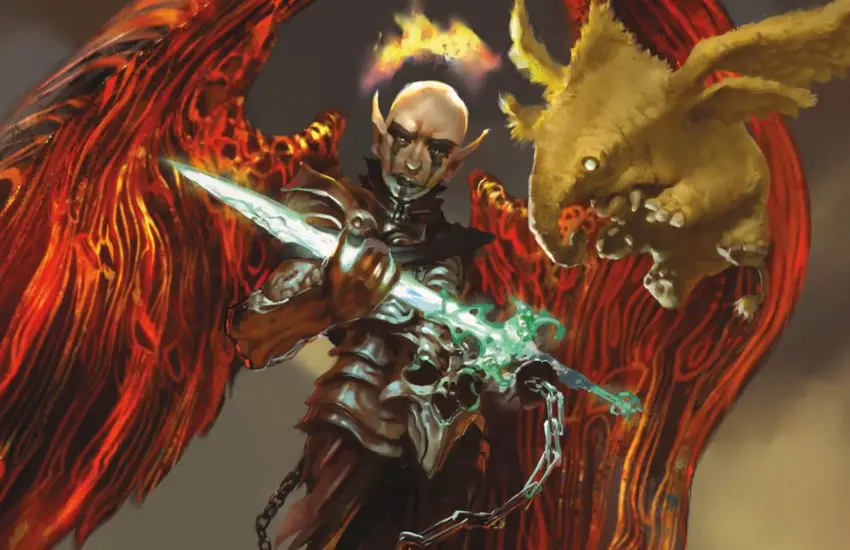The best thing about D&D is how flexible the game can be.
The ability for DMs and players to mold the TTRPG’s mechanics around what is most fitting for their own table is what makes D&D (and other tabletop roleplaying games) feel that much more personal than, say, a video game with set rules.
So why are we being so strict when it comes to the alignment of D&D monsters?
- Check these out:
Sure, every monsters stat block has some combo of lawful-neutral-chaotic and good-neutral-evil, but I honestly don’t think that DMs or players should feel the need to stick hard and fast with those descriptions.
Suggested tendencies
It might be useful for DMs to know which type of dragon would be most likely to help (or hinder) the Lawful Good party’s pursuits, but I think DMs should consider the posted alignment as merely a generalization of the monster type, rather than a certainty that all creatures of that type fall under that alignment.
Instead, I urge DMs to view a monster’s alignment the same as they would a PC’s. The Player’s Handbook actually includes alignments for races, with descriptions like “most dwarves are lawful, believing firmly in the benefits of a well-ordered society. They tend toward good as well, with a strong sense of fair play and a belief that everyone deserves to share in the benefits of a just order.”
PC alignment
Half Orcs are as inheriting “a tendency toward chaos from their orc parents and are not strongly inclined toward good. Half-orcs raised among orcs and willing to live out their lives among them are usually evil.”
This in no way means that eyebrows will be raised if a Chaotic Neutral dwarf joins the party, or of the gang encounters a Lawful Good Half-Orc barkeeper at the next tavern.
Just like humans, D&D races and, I would argue, most monsters have the ability to go against the grain of their genetic predisposition.
This may not be the case for the simpler of beasts — though basically all regular animals are simply classified as “unaligned” — but I believe that any creature with a conscience should have the ability to become good, just as all “good” aligned creatures and monsters should have the ability to be corrupted.
Does creature = alignment or alignment = creature?
This does, however, raise the issue that a drastic change in alignment may alter the creature entirely, turning it into something else.
Such is the case for Zariel, from Baldur’s Gate” Descent into Avernus, who (slight spoiler alert) was an angel-turned-archdevil following the shift in her alignment.
So maybe angels, by definition, have to be Good (or at least not evil) and devils have to be evil (or at least not good) or else they will change their monster type entirely.
At least that was the case for Zariel, but I’m sure there’s some wiggle room in there (hello, neutrality) that DMs can play with to make for some interesting personalities.
Magic’s influence
It might seem silly to think that a lowly devil could ever decide to become good, and that may be something of an impossibility depending on your DMs rulings. But hey, this is a world full of magic and wonder, so encountering a Chaotic Good devil may just be the result of some sort of spell or curse that messed with the creatures alignment.
I’m not kidding — this exact thing happens in that same Descent into Avernus module, so it just goes to show that, no matter how unbelievable it may seem, there are RAW ways for good-aligned devils to exist.
What is “good” anyway?
Wen it comes to making the actual choice to change alignment, it’s proven in D&D and in the real world that Good aligned beings can and do commit evil in their own pursuit of what they see as Good (potentially the highly touted “greater good”), and an evil being may very will align with the MO of a good-aligned party.
Some of the best villains in pop culture have thought, to their core, that they were “good” while committing acts of terrible evil, and some of the best heroes (AKA anti-heroes) have been bad people who decided to do good when put on the spot.
Basically what I’m getting at here is that, as nice as it is to have D&D’s alignment chart as a starting off point, one’s own goodness, or lawfulness, cannot be exactly pinpointed as one of nine plots on a chart, nor should it.
And I don’t think that D&D’s monsters — at least not the self-aware ones, anyway — should be beholden to their suggested alignments, either.
- Check these out:


